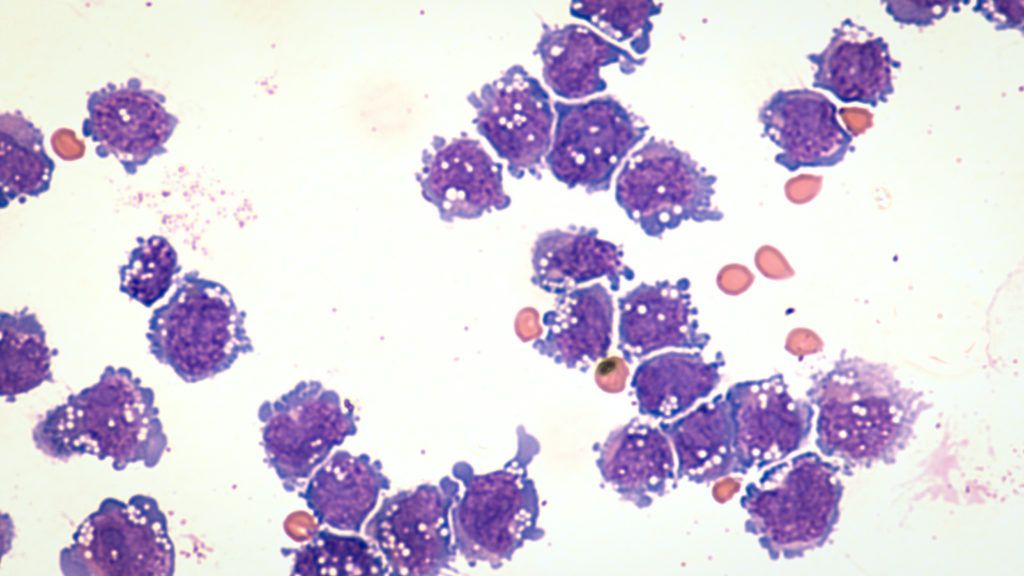Researchers analyzed various publicly available datasets and identified two RNA modification regulatory proteins that are not only overexpressed in melanoma, but necessary for melanoma growth.

The Trending with Impact series highlights Oncotarget publications attracting higher visibility among readers around the world online, in the news, and on social media—beyond normal readership levels. Look for future science news about the latest trending publications here, and at Oncotarget.com.
—
After melanoma of the skin metastasizes, it commonly becomes very difficult for doctors to treat. This is due to melanoma’s problematic tendency to acquire resistance to therapeutic interventions. Despite the development of many new targeted interventions and immunotherapies, five-year survival rates for patients with melanoma continue to be less than 10% for patients with lymph node metastasis and less than 5% for patients with distant metastasis.
“As the number of potential therapeutic DNA targets dwindle, many researchers are turning to RNA to tackle the problem.”
In 2018, researchers from Yale University School of Medicine and the University of Alabama at Birmingham in the United States set their focus on analyzing RNA alterations in melanoma, in hopes of identifying new, and more effective, therapeutic targets. Their research paper was published by Oncotarget in 2019, and entitled: “Dissecting the role of RNA modification regulatory proteins in melanoma.”
“Many studies have shown that these RNA modifications play crucial role in melanoma growth and metastasis [58, 59]. They are also involved in drug resistance mechanism.”
The Study
“Since RNA is a key molecule that drives every cellular process, their deregulation is present in nearly all human disease and play a causative role.”
The researchers explain that alterations among RNAs may arise due to altered activity or expression of the enzymes/proteins which are involved in the modification process. In this study, the team used multiple publicly available bioinformatics platforms to, first, analyze RNA alterations in melanoma samples, and then, to comprehensively analyze RNA modification regulatory proteins among melanoma samples. The publicly available datasets included: The Cancer Genome Atlas, The Human Protein Atlas, Oncomine, and the UALCAN database.
“Our study started with the analysis of various genetic alterations (amplifications, mutations/deletion) as well as RNA overexpression of these RNA modification regulatory proteins in The Cancer Genome Atlas melanoma database.”
Based on their analyses of these databases, reverse transcription quantitative PCR, soft-agar assays, validation by shRNA-mediated knockdown, and statistical analysis, the team identified what they believe are the most relevant RNA modifying proteins that play a crucial role in the development of melanoma. They found that METTL4 and DNMT3A RNA-modifying enzymes/proteins are both necessary for melanoma growth and overexpressed in melanoma.
“Based on this we infer that the upregulated expression of RNA modification regulatory proteins METTL4 and DNMT3A play a key role in melanoma initiation or progression.”
Conclusion
The researchers explained that their studies served the duel purpose of improving their understanding of novel pathways that cause melanoma to become untreatable, and also paving the way “to develop new, effective and sustainable therapeutic tools for optimal drug selection and treatment.”
“Additional future studies are needed to fully determine the role of these RNA modification regulatory proteins in melanoma tumor growth and progression (e.g., metastasis).”
Click here to read the full scientific study, published by Oncotarget
—
Oncotarget is a unique platform designed to house scientific studies in a journal format that is available for anyone to read—without a paywall making access more difficult. This means information that has the potential to benefit our societies from the inside out can be shared with friends, neighbors, colleagues, and other researchers, far and wide.
For media inquiries, please contact media@impactjournals.com.

